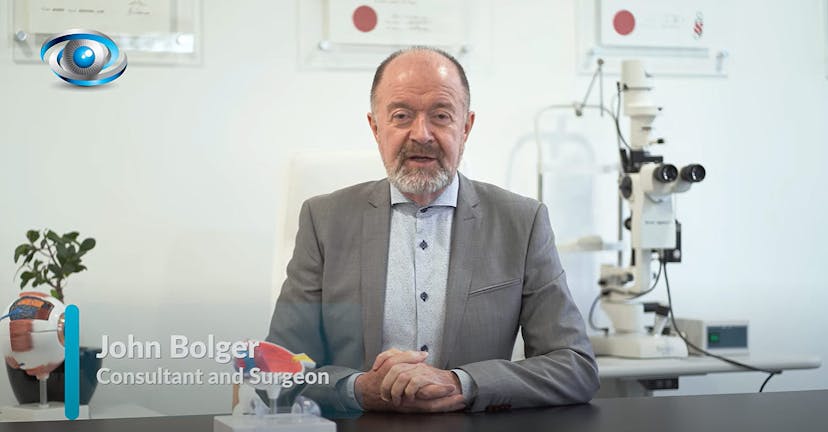
My-iClinic's Myopia Control Guide For The Whole Family
In today’s world, we spend most of our time looking at screens just an arm’s length away. Whether it’s work, school, or entertainment, life has shifted indoors, and for many of us, the horizon has become a distant concept. Unfortunately, this shift has had unintended consequences on our vision, especially for children. Myopia, also known as short-sightedness, is on the rise worldwide, and experts predict that by 2050, half of the global population will be myopic.
FREE Mypoia Control Brochure - Download Here
What Is Myopia?
Myopia occurs when the eyeball grows too long, causing light to focus in front of the retina instead of directly on it. This results in blurred distance vision, while near vision remains clear. Myopia typically begins in childhood, and without intervention, it can progress throughout adolescence and even into adulthood.
The alarming increase in myopia cases is not just a cosmetic issue. Severe myopia can lead to long-term eye health problems, including an increased risk of cataracts, glaucoma, retinal detachment, and myopic macular degeneration later in life.
Why is Myopia Becoming More Common?
Several factors contribute to the rise in myopia, many of which are tied to our modern, urban lifestyles. Here are some of the main causes:
- Time Indoors: The more time children spend indoors, the higher their risk of developing myopia. Exposure to natural daylight has been shown to protect against the onset and progression of myopia. Spending time outdoors allows the eyes to relax and focus on distant objects, which helps maintain healthy vision.
- Prolonged Close Work: Activities that require close-up focus, such as reading, studying, and using electronic devices, can contribute to the development of myopia. The longer children spend doing close work, especially at a young age, the more likely they are to become myopic).
- Screens and Technology: The use of illuminated screens, such as smartphones and tablets, has been linked to the rapid rise of myopia. These devices limit peripheral vision and keep the eyes focused on a single, short distance for extended periods, which can lead to eye strain and myopia.
- Genetic Factors: While myopia is not entirely determined by genetics, there is a hereditary component. Children with myopic parents are more likely to develop myopia themselves, especially if they lead similar lifestyles.

Why Myopia Should Be Treated
The onset of myopia is happening at younger ages, meaning children’s eyes are growing faster than in previous generations. This early onset increases the risk of developing serious eye diseases later in life. In the past, myopia typically stabilized by the end of adolescence, but today it can continue to progress into a person’s 30s or 40s.
Slowing the progression of myopia is crucial to reducing the risk of future vision problems. Regular visits to the optometrist can help detect myopia early, allowing for interventions that can slow its development.
Effective Myopia Management Methods
Thankfully, modern medicine has developed several ways to manage myopia and slow its progression. Here are some of the most effective methods:
- Lifestyle Changes:
- Encourage your child to spend at least two hours outdoors every day. This exposure to natural light helps protect their eyes and slows myopia progression.
- Follow the 20-20-2 rule: After every 20 minutes of close work, have your child spend 20 seconds looking into the distance. Additionally, they should spend at least 2 hours outside each day.
- Limit screen time and ensure that close-up tasks are done in short bursts, preferably in the morning rather than in the evening.
- Contact Lenses:
- Special contact lenses, such as multifocal or Orthokeratology (OrthoK) lenses, have been designed to slow the progression of myopia. These lenses help redistribute light evenly across the retina, reducing the likelihood of further eye elongation.
- Atropine Eye Drops:
- Atropine drops have been proven to slow the elongation of the eyeball, which helps reduce the progression of myopia. These drops are usually applied once a day and are most effective when combined with other management strategies.

The Myopia Control Clinic At My-iClinic
At My-iClinic, we offer a comprehensive approach to myopia management. During your child’s visit, they will undergo a thorough examination, including a measurement of their eyeball length. We provide individualized treatment plans that may include atropine eye drops and contact lens correction.
Our clinic also schedules six-monthly follow-ups to monitor your child’s progress. This ensures that any changes in their vision are addressed promptly, and the most effective treatments are continued.
How Can My-iClinic Help?
Myopia is more than just a vision issue—it’s a growing global health concern. While it cannot be reversed, its progression can be slowed, protecting your child’s vision for the future. Encouraging outdoor activities, limiting screen time, and following professional guidance can make a significant difference in managing myopia.
For more information on how My-iClinic can help control your child’s myopia, contact us today.
Find out more by Speaking to our team









